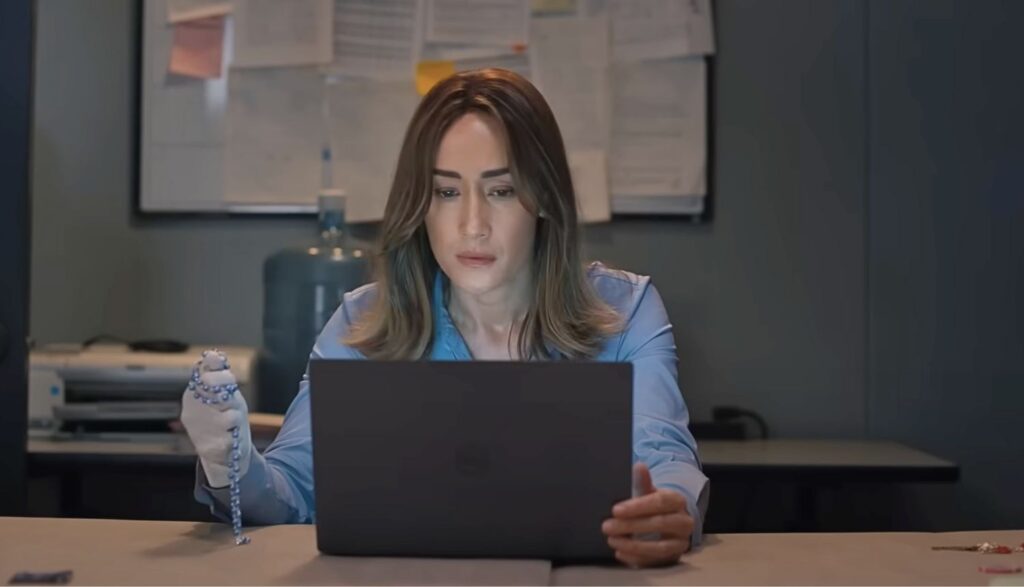
Star Wars: Young Jedi Adventures
Parents may want to exercise some caution before sharing this kid-focused Star Wars show with their own younglings.

Most people fill their basements with junk: broken lamps, old clothes, little-used board games. You know, all the stuff that they don’t really use but aren’t quite ready to throw away.
And maybe that’s why Renée Ballard works out of the basement, too.
Oh, sure, she may be a good cop. But she’s made too many enemies, ruffled too many feathers of L.A.’s finest. The department protects its own. And when Ballard started calling some of its own out, its leaders opted to ignore the department’s underlying issues and banish her to, quite literally, the basement.
Work on the cold cases, they told her. Stay out of trouble. Stay out of sight.
They didn’t really expect her and her ragtag team of volunteers to, y’know, solve anything. But Ballard’s not about to give these cold cases a cold shoulder. And a couple of them might just get hot in a hurry.
Ballard and her team wouldn’t be anywhere had it not been for the efforts of L.A. Councilman Jake Pearlman. His sister, Sarah, was murdered years before, and the LAPD never found her killer. With a little political pushing, he managed to create a cold-case task force just to bring the murderer to justice. And Ballard appreciated the opportunity.
But she and the rest of her team—disgruntled former cop Samira Parker, retired officer Thomas Laffont, slightly goofy volunteer Colleen Hatteras, intern Martina Castro and LAPD lapdog Ted Rawls—now have other quarry in their sites, too. Take, for instance, the vagrant who turned up dead about eight years ago. The last known footage of the victim, still alive, shows that he was holding a baby at the time. A baby that was never found.
It’s the sort of case that almost everyone’s forgotten. And the few that do remember don’t seem to care. But when that disgruntled cop, Parker, starts poking around, someone else winds up dead.
And that’s not all. Ballard tests an old palmprint from the Sarah Pearlman case—hoping to turn up some DNA evidence—and she gets a hit in the department’s database. It sure looks like Sarah’s killer has killed before. And that crime, too, was never solved. Could it be that Ballard’s on the trail of a serial killer?
Could be. But to find out, Ballard figures she could use a little help. She needs to consult with another LAPD loose cannon: Harry Bosch.
The character Renée Ballard sprang from the overly fertile mind of author Michael Connelly, the guy who to date has written 19 books centering on Bosch, eight about Mickey Haller (best known as The Lincoln Lawyer) and six starring Ballard herself. All three characters have snagged their own series, with Bosch actually featured in two: Bosch and Bosch: Legacy are both available on Amazon’s Prime Video.
Ballard isn’t Bosch, of course. But their namesake shows share plenty of the same storytelling DNA.
That DNA is rooted, of course, in murder. One does not simply go after petty shoplifters in streaming crime procedurals; one must track down the worst possible criminals. The more horrific the crimes being investigated (streaming services assume), the more people will watch. Death is inescapable, and blood comes with the territory.
Admittedly, Ballard isn’t nearly as grotesque as many gritty whodunits. It’s probably even a little gentler on both your eyes and ears than its forerunner, Bosch. We see some corpses, of course, but blood-and-gut visuals take a back seat to hard-boiled policework and team chemistry. Ballard is more about solving a given crime, not sensationalizing it.
But that hardly makes this show good family viewing. You do see plenty of death. You hear some wince-worthy details of many a crime. Harsh profanity finds itself on the docket, too, including f- and s-words.
So while Ballard might not be as rough as some shows out there, that’s no reason to celebrate. This series might qualify for its own screen-based basement. It, too, may be something you’d rather not see every day—and might just as soon forget.
(Editor’s Note: Plugged In is rarely able to watch every episode of a given series for review. As such, there’s always a chance that you might see a problem that we didn’t. If you notice content that you feel should be included in our review, send us an email at letters@pluggedin.com, or contact us via Facebook or Instagram, and be sure to let us know the episode number, title and season so that we can check it out.)
Renée Ballard has just solved her first cold case, getting a criminal off the streets a decade after the crime. But rather than taking a breather, Ballard pulls another file—this one of a murdered man who was last seen alive with a baby in his arms. Alas, Councilman Jake Pearlman would like Ballard and her team to stop fussing around with these unsolved murders and solve one a little closer to home: his home. His own sister’s killer is still on the loose, and Pearlman wants Ballard to find him. Now.
Ballard wants to find the killer, too. So she and her team work both cases—hoping for a break in one. But when that break comes, Ballard realizes that the bad guy might not be a run-of-the-mill murderer. They might have a serial killer on their hands.
Ballard chases a suspect into a business. Both shoot at each other before Ballard eventually knocks the perp down with the butt of a shotgun. (He lies in a pool of his own blood while Ballard calls in.)
Evidence for both cold cases shows up onscreen: A photo shows the murdered man, his face bruised and contorted. The lifeless victim in the Pearlman murder is caught on video, too, with the camera showing her clothed body on her own bed. (Ballard notes that the victim was 16 years old, and her dental retainer was found near her remains.) Another woman is killed during the course of the episode, and we see her purple hair poking from underneath a covering draped over the body.
Ballard visits her grandmother, who encourages the overly tense officer to spend the night with “that lifeguard friend of yours.” When Ballard tries to change the subject, her grandmother stays that she herself has always appreciated a good “roll in the hay.”
We briefly see Ballard’s apparent “lifeguard friend,” who stands on a lifeguard stand with his chest exposed. Ballard, a surfer, greets him with her wetsuit half removed and revealing a bikini top. (Earlier, she lifts her shirt to expose a tattoo on the side of her midriff.)
A box of evidence from a cold case includes a statue of Santa Muerte, a Mexican folk “saint” who looks something like the Grim Reaper and is supposed to protect the devotee from death. One of the volunteers for Ballard’s cold-case unit keeps the clue close to her desk because she gets “some weird energy off of it.” (When Ballard says, “Please don’t tell me you think you’re psychic,” the volunteer replies that she’s only sensitive to the supernatural, earning a scolding from Ballard.) In another scene, the volunteer wonders whether someone is the astrological sign Ares or not.
A Black woman who became a police officer reminisces about how, when she was growing up, she was told to “watch out for the cops. It was always us against them.” When she became a cop herself, she admits that she lost a lot of friends—but that her career choice was driven due by her desire to help her own community.
We hear references to alcohol and drugs. Ballard and her mother drink beer together. Characters use the f-word once and the s-word twice. We also hear “a–,” “b–ch” and “h—.” God’s name is misused five times, twice with “d–n.” Jesus’ name is abused twice.

Paul Asay has been part of the Plugged In staff since 2007, watching and reviewing roughly 15 quintillion movies and television shows. He’s written for a number of other publications, too, including Time, The Washington Post and Christianity Today. The author of several books, Paul loves to find spirituality in unexpected places, including popular entertainment, and he loves all things superhero. His vices include James Bond films, Mountain Dew and terrible B-grade movies. He’s married, has two children and a neurotic dog, runs marathons on occasion and hopes to someday own his own tuxedo. Feel free to follow him on Twitter @AsayPaul.

Parents may want to exercise some caution before sharing this kid-focused Star Wars show with their own younglings.

Rife with disturbing content and sexual material, the real malice shown by this psychological thriller is toward its audience.

Tony DiTerlizzi’ popular sci-fi book series migrates to Apple TV+, telling a dystopian tale about a lonely girl, friendship and family that families just might like.

In NBC’s sitcom, Happy’s Place, Bobbie must learn to share ownership of her late father’s tavern when she discovers she has a little sister, Isabella.